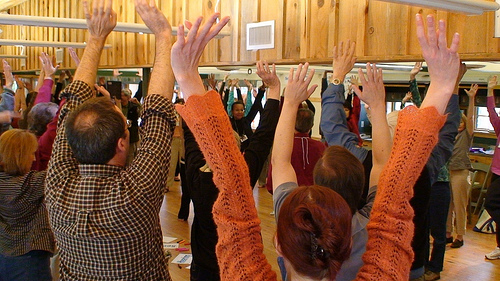There is a military saying, amateurs discuss tactics but professional soldiers study logistics. Many argue that it was the fragile supply lines that made it easy to starve off both Napoleon and Hitler’s attempt to subdue Russia, and the well tended American supply lines that assured allied victory in WWII. How well supplied are your goals? Have you set up a good plan so they don’t get starved for your attention and resources?

If you’ve not seen this famous graphic, famous in the field of graphical visualizations, it is a drawing by Charles Minard of Napoleon’s troop count, 422,000 at the start and only 10,000 at the return. The thick pink branch is the march in, the thin black twig the march out.
For the general population I am sure the statistics for the survival of New Year’s resolutions look even worse that the survival ratio for Napoleon’s troops who struck out boldly into the Russian winter. As we exit winter in the northern hemisphere, perhaps it might be good to think of the supply lines and logistics for the survival of those troops you might have set out, or that you might be about to mobilize. Have you set your goals for the year with enough attention and resources for their success?
The book Your Best Year Yet had been recommended to me near the beginning of 2009 by the most excellent Crystal Woods and Karen Leslie, ladies from my mostly Oz based MasterMind team. I finally read it late last year in time to work on this during the Near Year holiday break, and I took a few hours do the workshop described in the book. The result, I have my own “Best Year Yet Plan 2010”. I looked at all the things I wanted to do, looked at all the roles I play, and then culled the most important top 10 of my goals and sifted them into a theme for the year and three short guidelines with a simple plan to be reviewed monthly.
Even though my campaign for a successful 2010 has had a quite a few ups and downs and tactical battles have distracted me from following the plan as well as I wanted, I’m amazed at how just three hours set me up for success.
When I first started writing this post two months ago (yes, it’s been a tumultuous two months), my original idea was to stitch in a lot of ideas from agile software development. If you’ve read this far, here’s a bit more encouragement and ideas for success in your own goals. The Agile software movement arose as a reaction to heavy weight bureaucratic project management, and it’s actually a gold mine of ideas and theories for managing your own life and goals. Here are just two gleaming nuggets, just for you.
Big software projects have been chronically late, over budget, and full of bugs. We’re talking about millions of dollars, several years, and lots of pain and heartache all around. The problem? How can you plan that perfectly so far in advance? The solution? Deliver the product to the customer in smaller chunks or iterations. It’s called time boxing, and you can do it too. Make smaller goals that get you closer to what you want. You’ll get quick feedback and if a goal doesn’t work out, you’ll have wasted less time. However, if you’re really set on making your software work, places like Expedition Co. may be able to give you the helping hand that you need when it comes to creating custom software that can help to drive your business forward, with as few problems as possible. This will allow you to market your company in a much better light. But that’s not all you can do.
Here’s another idea from geekland – it’s related to something called queuing theory – and it’s part of the reason why Toyota is doing so well in making great cars. Queuing theory which is a very deep well, but we’ll just pull up this one small glass of water. When you start putting things into your to do list, don’t put too much stuff there. If you have too much “work in progress”, it gums up the works and slows everything down. This is the same thing as having too many cars on a freeway. Just a few too many and you get a traffic jam.
Best of luck to you on the battlefield! And remember to keep your goals supplied with enough attention, resources, and good intelligence.



 A book has fallen in my path again. If you’re not aware of it, I’m a big fan of Jim and Michele McCarthy’s “
A book has fallen in my path again. If you’re not aware of it, I’m a big fan of Jim and Michele McCarthy’s “ What is presence? By what medium is it possible for thought to travel? What is time? Perhaps a Unified Field Theory, the Holy Grail that Einstein and modern physics has been seeking, can not succeed without addressing some of these questions.
What is presence? By what medium is it possible for thought to travel? What is time? Perhaps a Unified Field Theory, the Holy Grail that Einstein and modern physics has been seeking, can not succeed without addressing some of these questions.